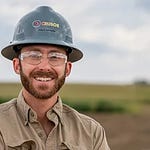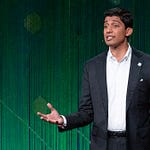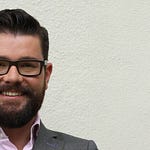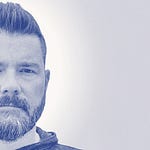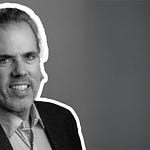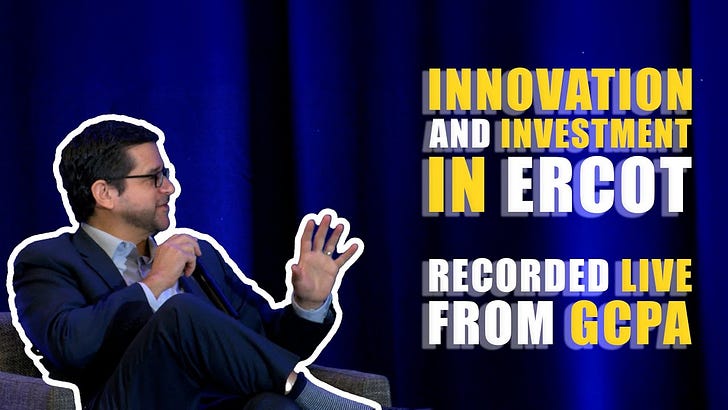In this episode, I had the privilege of speaking with Mary Powell, CEO of Sunrun, about her vision for the future of energy in Texas and beyond. Mary has been a transformative force in the clean energy sector, and her passion for innovation and customer-centric solutions is contagious.
We explored how Texas, now ranked third nationally for residential rooftop solar, is emerging as a leader in solar and battery adoption. Sunrun’s initiatives, like their partnerships with Tesla and Vistra, are paving the way for virtual power plants (VPPs) to support the grid and reward homeowners. Mary emphasized that these systems are far from "virtual" — they provide real, tangible benefits, including backup power during storms and financial incentives for participation.
One of the most powerful takeaways from our conversation was hearing about customers who powered through Hurricane Beryl for over nine days thanks to their solar-plus-storage systems. Some even extended their power to neighbors, showcasing the community-strengthening potential of these distributed technologies.
Mary’s forward-thinking approach also addresses the misconceptions surrounding solar and storage. She reframes the outdated "cost shift" narrative by demonstrating how distributed power plants can flatten demand, reduce costs for all customers, and democratize energy.
Our discussion delved into the broader implications of clean energy adoption, including the integration of electric vehicles, smart home systems, and load management technologies. Sunrun’s vision is to not only provide energy independence and security but also generate revenue for customers while building a more resilient grid.
This episode is a must-listen for anyone interested in the future of energy, the role of innovation in combating climatic challenges, and the transformative power of customer-led energy solutions.
As always, I hope you find this conversation as insightful and inspiring as I did. Please like, share, and leave a five-star review wherever you listen to podcasts. Thank you for tuning in!
Timestamps
00:00 - Introduction to Sunrun and Solar Trends
02:40 - Sunrun's Impact in Texas
06:54 - Customer Experiences with Solar and Storage
12:28 - Understanding Energy Independence
14:20 - The Cost Shift Debate
19:34 - The Rise of Storage Solutions
22:45 - Virtual Power Plants and Customer Participation
27:13 - The Future of Distributed Energy Resources
31:49 - Regulatory Challenges and Opportunities
35:05 - The Vision for Smart Homes and Electrification
39:24 - Ensuring Accessibility for All Customers
Show Notes
Key Programs and Partnerships
Sunrun’s Virtual Power Plants (VPPs): Programs with Tesla Electric and Vistra that allow customers to participate in grid support and earn compensation.
Learn more about Tesla Powerwall.
Check out TXU Energy Battery Rewards Program.
Span Smart Panels: Innovative electric panels enabling sophisticated energy management during outages.
Visit Span.io for details.
Solar App (DOE initiative): A tool to streamline permitting and encourage solar adoption.
Explore SolarAPP+
Sunrun’s Vehicle-to-grid programs in partnership with Ford, using the F-150 Lightning to support the grid and earn customers up to $1,700 annually.
Key Statistics and Achievements
Sunrun reached 1 million customers in 2023.
Sunrun installs 3 MW of solar daily
VPPs could address 10–20% of peak demand and save $10 billion annually by 2030 (Department of Energy).
Hurricane Beryl survivors powered their homes for 9–11 days using Sunrun solar-plus-storage systems.
Transcript
Doug Lewin
Hello, everyone. I'm Doug Lewin, the host of Energy Capital Podcast, the number one Texas energy podcast. Thanks to each and every one of you for coming back to listen and learn about how energy is changing in the Lone Star State. My guest this week is Mary Powell, CEO of Sunrun. Sunrun has installed over a million solar power systems in the United States and now accounts for one out of every five systems installed. There’s no one better to discuss customer investment in generating assets.
We talked about megatrends toward solar and storage, what energy independence truly means, and how every solar and storage installation benefits not only the person or family using it but also the entire grid. To realize these benefits, we need to move beyond the old-fashioned utility math. Mary, a former CEO of Green Mountain Power, brings unique insights from her leadership in the utility space.
We also discussed Sunrun’s partnerships in Texas with Tesla and TXU Energy, the Inflation Reduction Act, and the evolving role of virtual power plants (VPPs), or as Mary calls them, distributed power plants.
As always, please like, share, and leave us a five-star review wherever you listen to podcasts. This episode is for paid subscribers, so to hear the full episode, subscribe at DougLewin.com. Thank you for your support!
Doug Lewin
Mary Powell, welcome to the Energy Capital Podcast.
Mary Powell
Thank you, Doug. It's so wonderful to be with you today. Thank you so much for your thought leadership on all things energy. And I am so looking forward to connecting.
Doug Lewin
Well, thank you for, for all you do. I've been wanting to talk to you for a long time. Obviously you've been following your career for quite a while. and excited about all the things you're doing, at Sunrun I hear you talk all over the place. You, you are very much the thought leader You're yourself. Obviously this is the Energy Capital Podcast we focus on Texas. Can we just start with just kind of what it, what is Sunrun doing in Texas? You know, how many customers, how big a market is this for you? You know, do you, what? Yeah. Just talk about Texas a little bit and how it is to operate here. Yeah. Yes. Yes.
Mary Powell
All right, yeah, let's talk Texas, Doug. I'm excited to talk Texas. Texas is really a growing leader, as you know, in leveraging solar and batteries to short-grid resiliency, which is right in the sweet spot of all of the thought leadership I've been provoking in this industry for 20 years, which is let's move forward in a way that we're not just accelerating this consumer-led revolution to a more affordable, resilient way for people all across America to power their homes, power their transportation, but let's do it in a way that actually can make the grid more affordable and resilient for everybody. And so I'm just big on Texas, so let's go big in Texas. Texas now ranks number third in the country. It surpassed California in the latest market report for adding jobs and panels to its energy portfolio. And Sunrun, Doug, as you probably know, has been in Texas since 2016. So we're really excited about the work that we're doing there. We are selling not just solar plus storage, but in many, many homes in Texas. We are also selling a more sophisticated electric panel through this company called Span. And that not just gives homeowners the resiliency of storage and the ability to power through events for long periods of time, but also gives them a more sophisticated energy experience during outages. So yes, I'm all excited, as you can tell. So I don't want to keep talking and not get to the next question.
Doug Lewin
No, no, keep, keep talking. This is all good. I actually want to just ask you, what did you say? We, know, obviously, as you know, we have a friendly rivalry with California. What did we just pass? I know we're past California utility scale solar, but we're way behind on distributed solar, right? Where, but was it in jobs?
Mary Powell
Texas now ranks third in the country for residential rooftop solar, as you probably know. And yeah, it surpassed California in the latest SEA market report for adding jobs and panels to its energy portfolio. you know, yeah. So again, we're excited about what's happening in Texas. We're also excited. I think, Doug, as you know, we're working with both Tesla Electric, sorry, as well as Vistra, on programs in Texas to again leverage all of these customers that we've been adding on in a way that they can work with the grid. In Hurricane Beryl we had 1,600 customers that powered through that event, which was just phenomenal. We spoke to a number of those customers. One of the stories that really touched my own heart was the fact that the customer told us that not only were they able to continue to power their own home for nine consecutive days. I mean, think about that, Doug. Nine consecutive days, because they had not just storage, but they also had solar. But then you also heard of these customers that were so excited that they were able to use extension cords to provide power to their neighbors' homes. I mean, it's just crazy when you think about the community benefits that can come from this customer-led revolution.
Doug Lewin
One of the reasons, there's so many reasons I was excited to talk to you, but I think one of those reasons, Mary, is you're, I think, maybe not unique, but rare in the sense that you are obviously deep in the details, but you also have this ability to communicate and use terms that people understand. so you're kind of like perfect for our audience, because we have this mix of folks that are energy experts and folks that are not energy experts, but because of Winter Storm Uri and Hurrican Beryl and so on and so forth, you know, paying attention to the grid and want to know more actually for, for, for both of those audience. Cause I think there's some misconceptions among, energy experts as well on this. I think the way a lot of people think of storage, Mary is like the way you see it kind of on the bulk grid, right? It's going to deploy for an hour or two. And so you have, there's this common misconception that during a storm storage can only last an hour or two. It's not going to do that much for you. Can you talk a little bit more about the experience of those 1600? I know you spend a whole lot of time personally talking to your customers and understanding their experience. First of all, how are you configuring those batteries to actually make it all the way through the night? And B, what did you hear from customers in the wake of that horrific event in Houston, Hurricane Beryl?
Mary Powell
Yeah, so again, so thank you. do like to talk in common sense terms because I really do believe ultimately that the future that I'm most hopeful about is one that I believe is going to happen because of this customer-led revolution. And the only way the customer-led revolution will accelerate is for people to gain understanding. And so again, that's why I really appreciate the work that you do, Doug, because it's really important that we articulate the massive benefits to consumers in improving their lives by transitioning to newer, more innovative technology to power their homes and transportation. So yes, simply put, I'm a firm believer in solar and in storage, and as you know, I ran a utility for a long time. I was an executive there for 20 years, and I was the CEO for 12 years. And in that 12 years, I would say the most important thing I feel I did was was really prove that solar and storage in Vermonters homes could be used to lower the cost of the grid for all the other customers that we served while also providing what utilities, I mean, they were never really built for perfect power, but with climatic changes, it's not even close that they can deliver perfect power because they in essence are running a massive grid that then has all these distributed parts and pieces, but is basically about 40 % economically efficient on a good day and is not built for climatic events. So mean, a big part of why I leaned into distributed technologies and innovation is A, I love innovation, but B, it's like I was sitting on top of a hundred plus year old way of doing things that felt like it was not just prime for disruption, but it felt like it was never going to be able to be the solution we needed with the acceleration of climatic events. And that's exactly what you're seeing. mean, look at what happened in Hurricane Beryl. You had transmission towers that looked like twigs entwined in masses on the ground. that's like when I joined the utility industry over 20 years ago, the exact same thing happened, Doug. It was an ice storm in the Northeast that literally turned transmission towers going from Canada into the United States of America, like just brought them down. So turned them into twigs entwined is what I like to say. So we need these solutions that can power homes in a more energy efficient way, you know, and have the generation of power sitting right on top of where the power is needed and being used. But with storage and generation in the same location, you know, again, that's how I got to the example of we had a customer that went 11 days and could have gone longer because you have that magic that happens between solar and storage. Storage alone is also super powerful. Solar alone is powerful. But the pairing of them is where you really get that magic, not just for the consumer, for the customer and how they live their life, but also for the grid, because it also helps to future proof the customer from the changing utility rate structures, right? Where you could, you can alter the profile of the storage device to meet the needs of rate structures as well that again, utilities as they're looking to figure out ways to solve to the future, they are looking at more complicated ways of we'll pay more for energy here, we're going to charge you more there. So it also really future proofs the home in that sense. But I think that the most important thing, and you're right, I talk to customers, I call customers every week, I am out in our Lowes selling to customers with our reps, I'm out with installation crews installing. what really just again is so important to me is I'm hearing over and over again customers telling me, Mary, you're selling me, peace of mind. You're selling me economic stability. You're selling me a greater sense of safety and comfort in my own home because I don't have to worry about the disruptions of the grid. And in many cases, they're also getting the joy of then helping their neighbors during these scary climatic events and providing comfort and power in their communities.
Doug Lewin
Yeah, I think energy security, energy independence, you know, for years and years, we would hear from elected officials about energy independence. This is really a true energy independence because you have that ability to produce and store power on site. I want to ask you though, Mary, about... Go ahead, please.
Mary Powell
Yeah, that's, mean, just Doug, sorry, just on that one of energy independence, it is, you are so right and it is so critical. And one of the funny things I find is some people, you know cause again, everybody likes to pay a lot of attention to politics these days. And, you know, one of the things that really struck me about residential solar and storage from so many years ago is it is really It is the one energy source that polls so strong across every party line. And the reason is because A, what's not to like, but B, it speaks in multiple languages. It speaks to energy independence. It speaks to another customer's desire to have cleaner energy and have that be their motivator. And it speaks to other customers that are just frankly tired of utility rates that just keep rising at levels that they can't deal with and that the fact that they can lock in their cost and have a stable, cost-effective future.
Listen to this episode with a 7-day free trial
Subscribe to The Texas Energy and Power Newsletter to listen to this post and get 7 days of free access to the full post archives.






